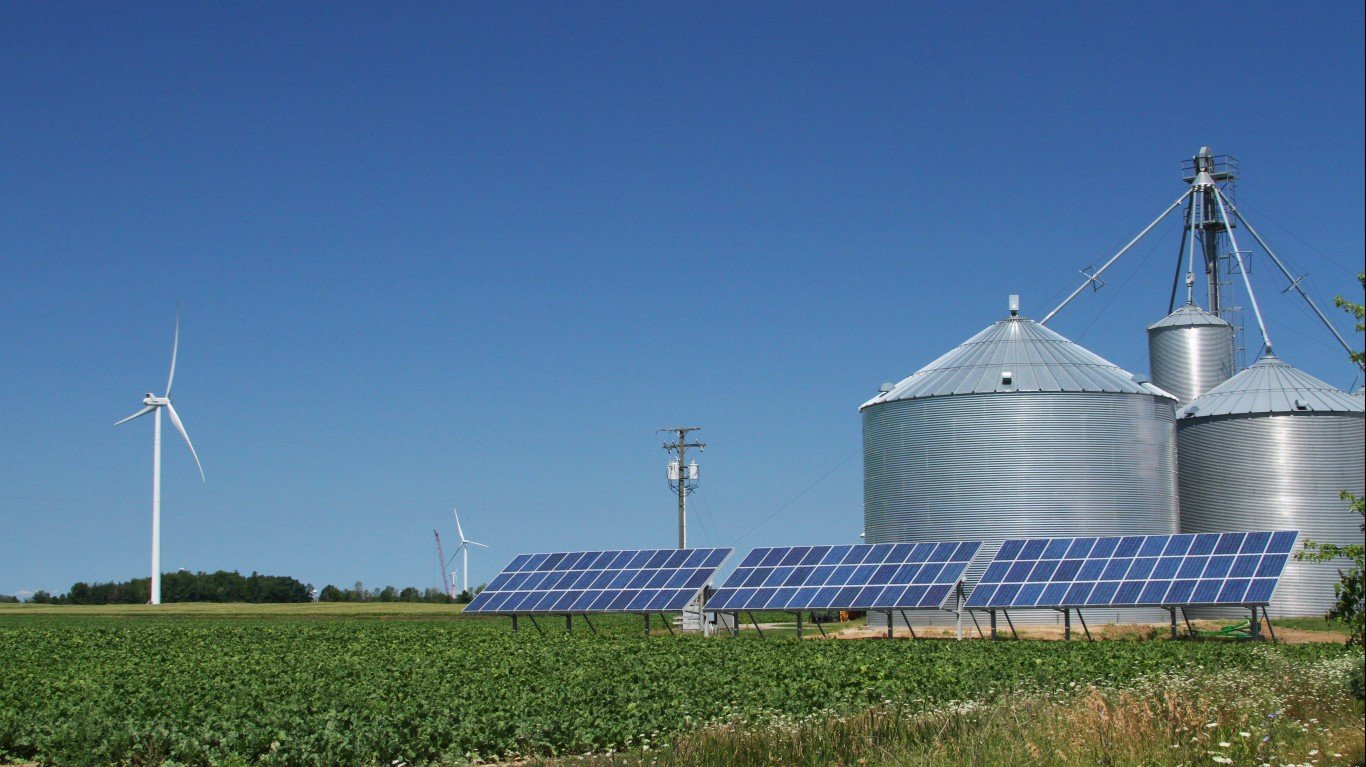
48. West Virginia
> Potential jobs created under Inflation Reduction Act in 2030: 1 for every 319 people (5,587 total)
> Potential new jobs as a share of current unemployed population: 18.2%
> Unemployed population in 2022: 30,662 (3.9% of labor force)
> Energy-related carbon dioxide emissions in 2021: 49.5 metric tons per person (234.5% higher than avg.)

47. Mississippi
> Potential jobs created under Inflation Reduction Act in 2030: 1 for every 307 people (9,628 total)
> Potential new jobs as a share of current unemployed population: 19.6%
> Unemployed population in 2022: 49,142 (3.9% of labor force)
> Energy-related carbon dioxide emissions in 2021: 21.4 metric tons per person (44.4% higher than avg.)

46. Illinois
> Potential jobs created under Inflation Reduction Act in 2030: 1 for every 307 people (41,694 total)
> Potential new jobs as a share of current unemployed population: 14.1%
> Unemployed population in 2022: 295,787 (4.6% of labor force)
> Energy-related carbon dioxide emissions in 2021: 14.5 metric tons per person (1.9% lower than avg.)

45. Connecticut
> Potential jobs created under Inflation Reduction Act in 2030: 1 for every 303 people (11,904 total)
> Potential new jobs as a share of current unemployed population: 14.8%
> Unemployed population in 2022: 80,470 (4.2% of labor force)
> Energy-related carbon dioxide emissions in 2021: 10.1 metric tons per person (31.8% lower than avg.)

44. Michigan
> Potential jobs created under Inflation Reduction Act in 2030: 1 for every 300 people (33,761 total)
> Potential new jobs as a share of current unemployed population: 16.6%
> Unemployed population in 2022: 203,427 (4.2% of labor force)
> Energy-related carbon dioxide emissions in 2021: 14.7 metric tons per person (0.5% lower than avg.)





